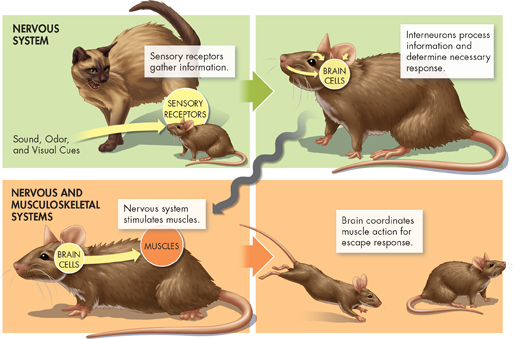
FIGURE 25–4 Gathering and Responding to Information The nervous and muscular systems work together to produce a response. Predict Would an animal with a malfunctioning nervous system be likely to produce an appropriate muscular response to a predator? Explain.
ddGathering and Responding to Information Complex animals, such as mammals, use several linked body systems to respond to events in their environment, as shown in Figure 25–4. The nervous system gathers information using cells called receptors that respond to sound, light, chemicals, and other stimuli. Other nerve cells collect and process that information and determine how to respond. Some invertebrates have only a loose network of nerve cells, with no real center. Other invertebrates and most chordates have large numbers of nerve cells concentrated into a brain.
Animals often respond to the information processed in their nervous system by moving around. Muscle tissue generates force by becoming shorter when stimulated by the nervous system. Muscles work together with some kind of supporting structure called a skeleton to make up the musculoskeletal system. Skeletons vary widely from phylum to phylum. Some invertebrates, such as earthworms, have skeletons that are flexible and function through the use of fluid pressure. Insects and some other invertebrates have external skeletons. The bones of vertebrates form an internal skeleton. For example, the hard shell of a lobster is an external skeleton, while your bones are part of your internal skeleton.
 In Your Notebook Construct a flowchart showing the events in Figure 25–4 in chronological order.
In Your Notebook Construct a flowchart showing the events in Figure 25–4 in chronological order.
Table of Contents
- Formulas and Equations
- Applying Formulas and Equations
- Mean, Median, and Mode
- Estimation
- Using Measurements in Calculations
- Effects of Measurement Errors
- Accuracy
- Precision
- Comparing Accuracy and Precision
- Significant Figures
- Calculating With Significant Figures
- Scientific Notation
- Calculating With Scientific Notation
- Dimensional Analysis
- Applying Dimensional Analysis




